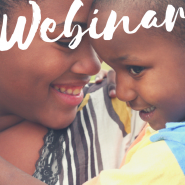Adolescent Mental Health: Creating a Pathway for Healthy Development
$15.00
Product Description
In this Webinar:
- Explore common mental health struggles faced by adolescents and teens
- Discuss key neuroscientific factors that impact the developing brain during adolescence
- Describe the role of attachment in influencing adolescent mental health
- Explain the concept of separation theory as it helps shape a young person’s emerging sense of identity and self-esteem
- Illuminate exercises and techniques that can help adolescents make sense of their story, differentiate from negative influences, foster more self-compassion, and grow into their true selves
One major concern in the field of mental health over this past year has been the potential impact of COVID-19 on the psychological state of adolescents and teens. In addition to a huge disruption in their social lives and learning structures, the pandemic has separated many kids from vital services they may have received at school to address mental health concerns.
Even in “normal” times, adolescence is a tumultuous period in which a person’s brain is dramatically shifting and developing in ways that can flood them with intense emotion. Transitioning from a dependent child to an independent adult is process that can be filled with confusion and ambivalence for both the young person experiencing it and their parents. As parents, caretakers, and counselors, our role is to be there for adolescents, providing a safe, supportive, and secure base from which they can launch into the world. And we can all get better at this pursuit by learning more about what young people are experiencing, what challenges they face, and what ways we can best support them.
This webinar will take a look at some of the invaluable lessons we can draw from the fields of interpersonal neurobiology, attachment theory, mindfulness research, and separation theory to shine light on the factors influencing teen mental health. The presentation will further lay out a pathway by which parents, caretakers, and professionals can support a child’s mental well-being, build trust, and strengthen their sense of self. By making sense of their own story and experience, a young person can learn to embrace a more curious and compassionate attitude toward themselves, foster more resilience, and build a toolkit to handle the challenges that are thrown their way.
Learning Objectives:
- Describe key neuroscientific factors that impact the developing brain during adolescence
- Describe the role of attachment in influencing adolescent mental health
- Explain the concept of separation theory as it helps shape a young person’s emerging sense of
identity and self-esteem - Apply exercises and techniques to help adolescents make sense of their story, differentiate from negative influences, and foster more self-compassion












Reviews
There are no reviews yet.